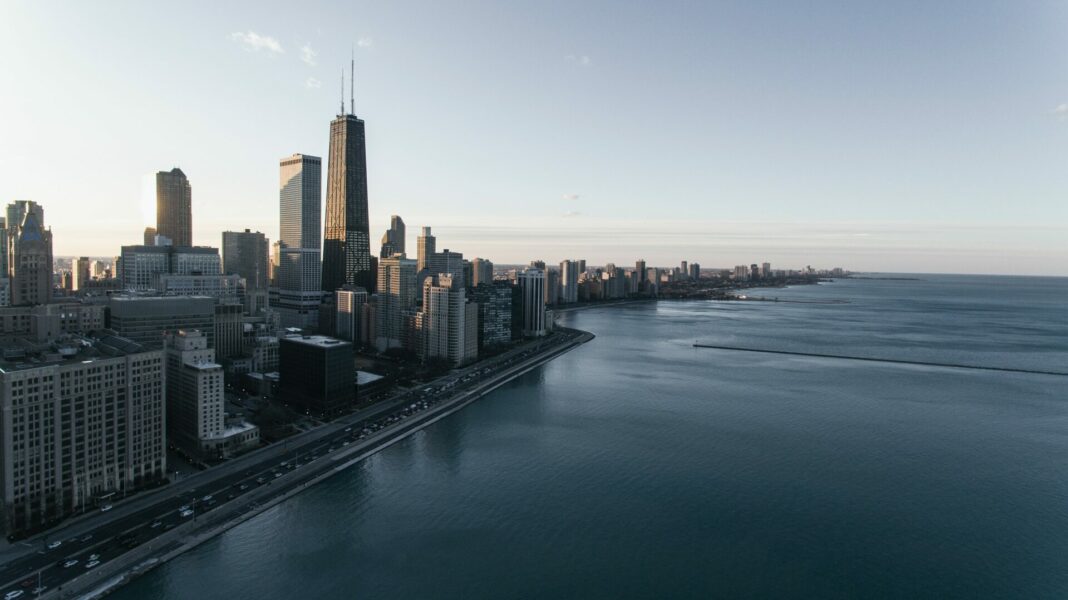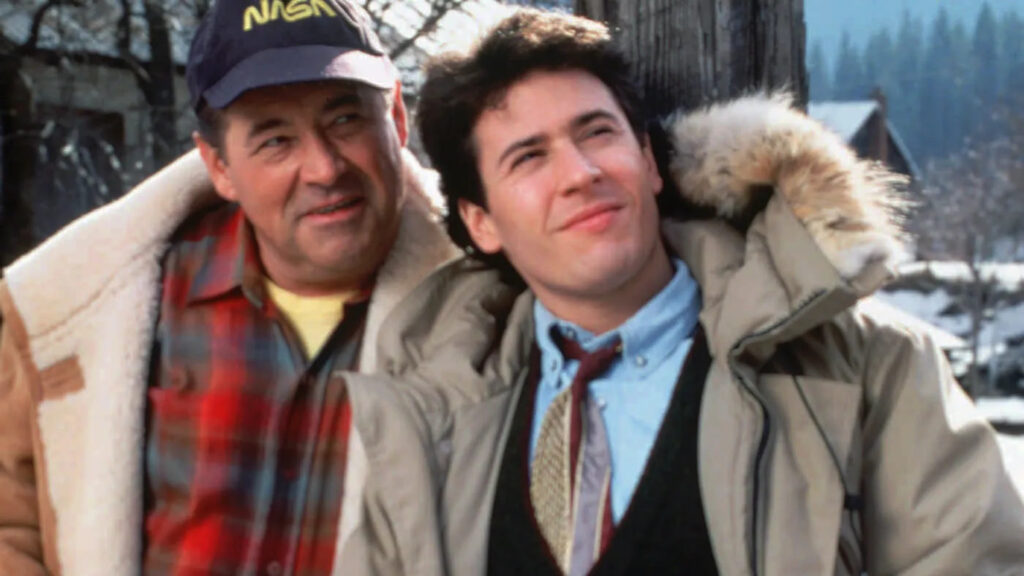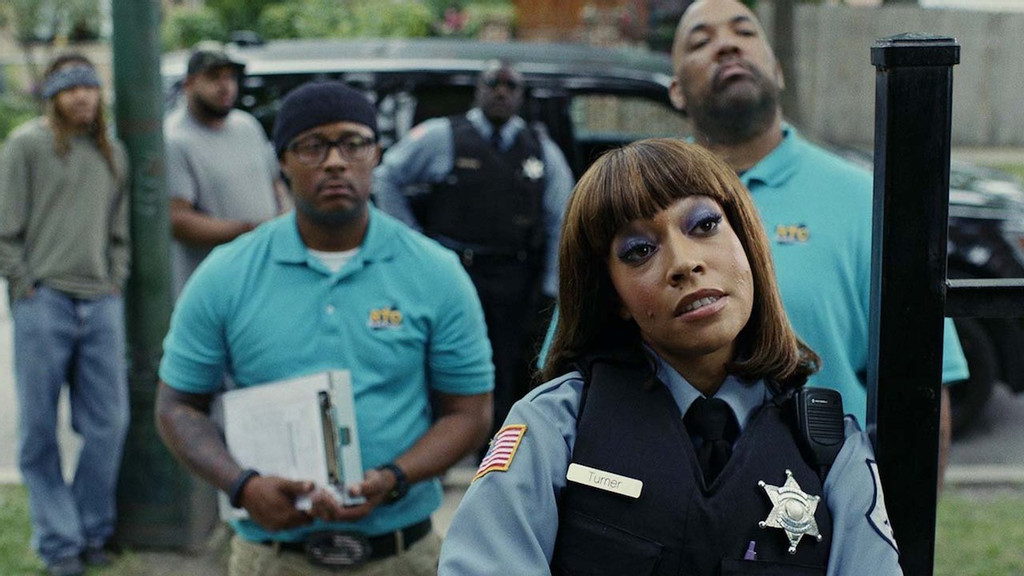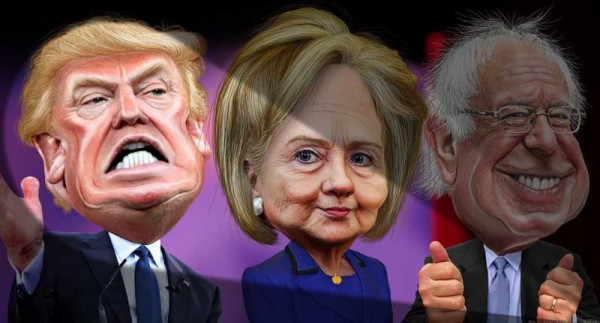West Palm Beach, FL. Millions of Americans spend millions of hours watching entertainment on the small screen. Almost all those shows are set somewhere but also, seemingly, nowhere. What did we ever learn about New York from watching Friends? We know The Office is set in Scranton, but there’s nothing we ever see in the show that couldn’t come from a soundstage. Is there a world outside the hospital walls in Grey’s Anatomy? Once in a while, there is a show in which the setting is a character and the place itself is a major part of the story. Two classics in this realm are Northern Exposure, from CBS in the 1990s, and South Side, which currently has three seasons on HBO Max and, sadly, seemingly no more to come.
Many FPR readers may already be familiar with Northern Exposure. It ran from 1990-1995, the world before HD. Pleated pants were cool. The main character was Joel Fleischman, a Jewish doctor from New York, working in rural Cicely, Alaska, to pay off his medical school loans. Northern Exposure was more than a “fish out of water” story. Fleischman interacted with bush pilots, Indian healers, bartenders, a former astronaut, and a radio DJ, as he learned about himself and his relationships with others. It had a truly ensemble cast with many quirky characters, clever plots, a well-chosen soundtrack, and compelling writing. It was smart and funny and had a well-developed world of its own.
One of the remarkable things about Northern Exposure is the way in which fictional Cicely, Alaska, was shaped into such a real place. Though it was filmed in Roslyn, Washington, Northern Exposure relied on much more than wintry landscape shots of Washington for the sense of the real–though it had those in abundance. Cicely had a history, it had traditions. There were episodes about its past and about some of its annual events, like the Mosquito Festival, the Thanksgiving parade, the running of the bulls, and much more. There was The Brick, where everyone went for dinner, and Ruth-Anne’s store, where everyone went shopping. There were at least a dozen characters who were more than types but had their own backstories and episode plots. We followed along as they held local elections, fought the local malady (glacier dropsy), celebrated weddings and funerals, bowled in a league, and commemorated the town’s oldest tree.
The south side of Chicago is not much like Alaska, or the Pacific Northwest, but South Side captures some of the same spirit as Northern Exposure. So far, South Side has aired from 2019-2023, with three seasons. It was created by the team of Bashir Salahuddin and Diallo Riddle, who also act in the show. It is a comedy, definitively set in the south side of Chicago, where it centers around Simon and Kareme and their coworkers at the Rent-To-Own store (who do a lot of repossessions); a pair of police officers, Sergeant Turner and Officer Goodnight, assigned to the community; and various community members such as Alderman Allen Gayle. The show includes a local Civil Rights legend, aspiring musicians, teachers, relatives, and more. It’s likely that fewer FPR readers are familiar with South Side than Northern Exposure and many may not always enjoy it. Fair warning: South Side is a comedy, but it has a lot of profanity, some drug use, semi-frequent vulgarity, and quite a few references to sex. It is funny, but it is not kid friendly.
In South Side, Chicago is really a character in the show. From the opening music to the setting and events, South Side is all about the south side. The characters have favorite local restaurants, streets and districts are referenced, and actual Chicagoans appear–like Chance the Rapper and Jeff Tweedy. Chicago magazine says it is “a Chicago sitcom that feels like Chicago.” There is an episode where Simon learns to step. One episode is a beautiful homage to, and reinterpretation of, Ferris Bueller’s Day Off. It’s no surprise that the show’s creators are actually from Chicago.
Like Northern Exposure, South Side shows the ways in which a sense of place marks real community. South Side episodes often include “annual events,” like the hot wings and cold spades tournament, the choral singing competition, elections, and the Juke-a-Thon for the pom-pom teams. These are the kinds of things that distinguish a neighborhood and a place. There is a guy with a recording studio in his basement. There’s a neighborhood party promoter. These stories don’t take place in any old setting; they take place somewhere specific. Some of these plots seemingly wouldn’t happen anywhere else. That gives structure to the relationships between characters and ties individual episode plots to the show’s overarching narrative.
As in real life, events and relationships in South Side occur in space, and people have connections to each other that are built around relationship to place. Before he becomes an alderman, Allen Gayle is jockeying for status in the Heirs of Madagascar social club and appearing on local TV. Local TV and radio appear in several episodes. Simon is always scheming and dreaming and never gets as far as his intelligence deserves. The parallels to Northern Exposure are many. In Northern Exposure, there is an episode where Holling wants to join the Sons of the Tundra, a local philanthropic group, and there are also episodes built around local elections. The local radio station, KBHR 570 AM, is a throughline in the series, always helmed by the Chris Stevens character. (Fans have created an online version.)
While both South Side and Northern Exposure rely on building a place-specific world that feels real to some extent, both shows employ elements of magical realism. In Northern Exposure, dreams figure largely into plots, Ed experiences “sleep-flying” as he discerns his vocation as a shaman, Maggie’s boyfriends are always killed in tragic accidents, and one time Chris has a strange transaction with a deer in the woods while hunting. South Side has similarly quirky or sometimes not entirely realistic plots. There is an episode where Q builds a pyramidal couch which becomes some kind of portal, an episode with a criminal group called “The Laughter,” a church play performed during a tornado, at one point Alderman Allen Gayle attempts to become a DJ, and it turns out that the Rent-to-Own computer software is a repurposed Cold War relic still somehow tied to nuclear systems. In both shows, these fantastical elements develop the characters and the place and often reference philosophy or real-world events in some way, like the Litcoin episode.
The elements of magical realism in a show like South Side are part of what makes it fun to watch, but it also reminds us of the magic of real places. There is a right and a wrong place to get a burger in your town. Not all fries are created equal. There is some corner tied so closely to some memory that it is more than it seems. There is a place that you refer to by what used to be there. There is an event that happens nowhere else. There is a ridiculous local politician. When places are real to us, they become more than they are. Even places where we struggle financially and face challenges become special and meaningful.
A real place is also where you can find real community. In community, some people take on legendary status: they get epic nicknames and have lore built around their lives. They cannot escape their past–for good or for ill. Maybe there is a guy who is making furs from local animals. Maybe there is a mild sauce people crave more than anything. Maybe “Greg the Marine” isn’t really a Greg or a Marine. These are the kinds of real ways we relate to real people in a place that we know. “Don’t you know the story?” “Don’t you know that guy?”
One of the most important aspects of South Side is how it highlights joy and the interesting aspects of the characters’ lives. Simon is full of good business sense and creative ideas. Kareme knows all about space and has written a science fiction novel. Officer Goodnight has a great singing voice and a good relationship with his wife. Sergeant Turner has great detective skills and the best wig collection on television, even if she has a fear of clowns. Almost all of the characters have side hustles and hidden talents.
So many shows that seem to be grounded in a place center on criminality and depravity. Think of a show like Bloodline from a few years ago, very much set in the Keys and also very dark. The Wire is another example–excellent show but hardly showcasing any of the beauty of Baltimore. It seems a detailed, real setting is a requirement for a gritty drama or dimly lit series. South Side shows us an alternative. Not everything you learn about a character needs to be a dark secret or hidden trauma. Sometimes the dysfunction can be up front and the hidden parts can be a pleasant surprise. It’s possible to be attached to a place where the potholes will wreck your car.
Whether or not you appreciate Northern Exposure or South Side, we could use more shows that depict the relationship between people and places. Places shape us and provide the contours of our communities. And despite the grittier dramas, the grip that a place has on us is not always all about past crimes and complicated emotions. Sometimes even a place we can’t seem to “escape” can be a source of pleasure or comfort in some ways. Shows like Northern Exposure and South Side show us the magic of real places. Let’s hope we get more shows that reinforce that reality and that the creators of South Side get more opportunities to share that truth with viewers.














You have reminded me how much I enjoyed Northern Exposure and whetted my appetite for South Side which I have not watched.
Northern Exposure was a great show in many respects. I’ve got the DVDs and the t-shirt from a pilgrimage to Roslyn.
You’ve got me thinking about other “placed” television. Mayberry, NC of the Andy Griffith Show (though a bit “magical” in its avoidance of race relations) would seem to qualify. On the other end of the southern entertainment spectrum, In the Heat of the Night (which did take race seriously) could probably make the list too. Debate? Others? Glad to hear of South Side keeping the geographic genre alive.
This is one reason why I like Andy Griffith so much. Mayberry – the town itself – was an essential character to the show. It grounded the show in a real Southern culture. It showed the power of place. Good article!
I nominate Twin Peaks to the list. It uses its fictional Pacific Northwest town as a character as well, and most of its outdoor shots were filmed (so I find on Wikipedia) near Roslyn.
The great Sundance Channel series Rectify was set in fictional Paulie, Georgia, which is very much portrayed as a real place. The show’s creator, Ray McKinnon, filmed the series in a small city outside of Atlanta, chosen because he wanted Southerners who watched the show to recognize the setting as truly Southern.
I’d also add that many Nordic and UK detective shows are strongly placed and filmed on location: Shetland, Bordertown, Broadchurch, etc.
We can also add The Bear, another Chicago based show, to this list!
Gilmore Girls, about a single mother and daughter, where the whole small town was part of raising the daughter.
Comments are closed.